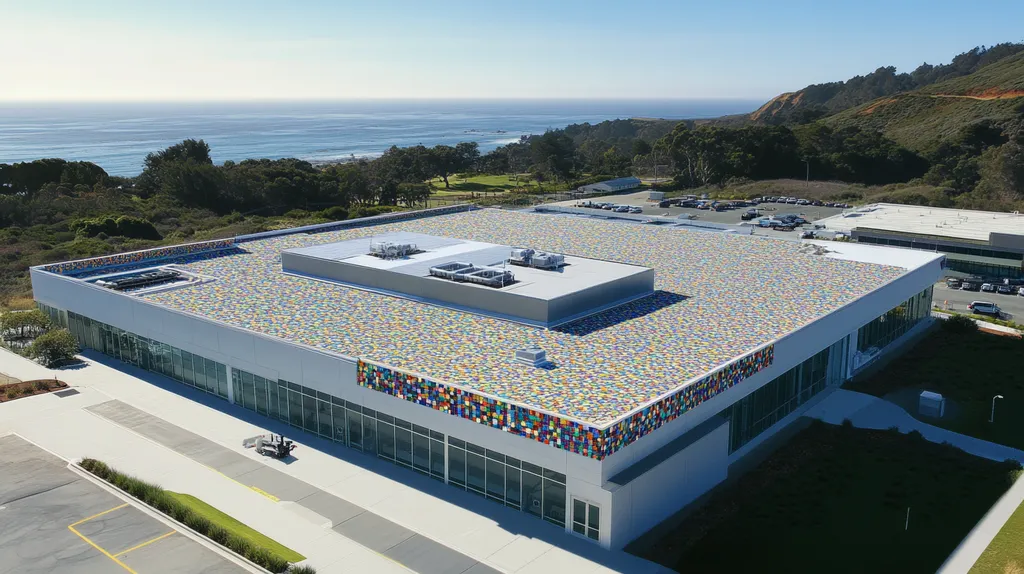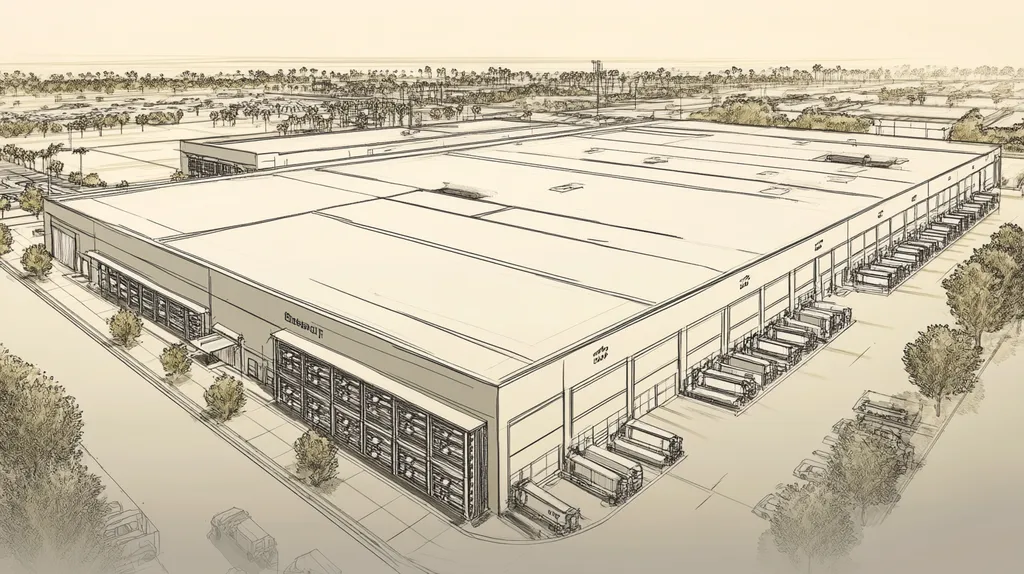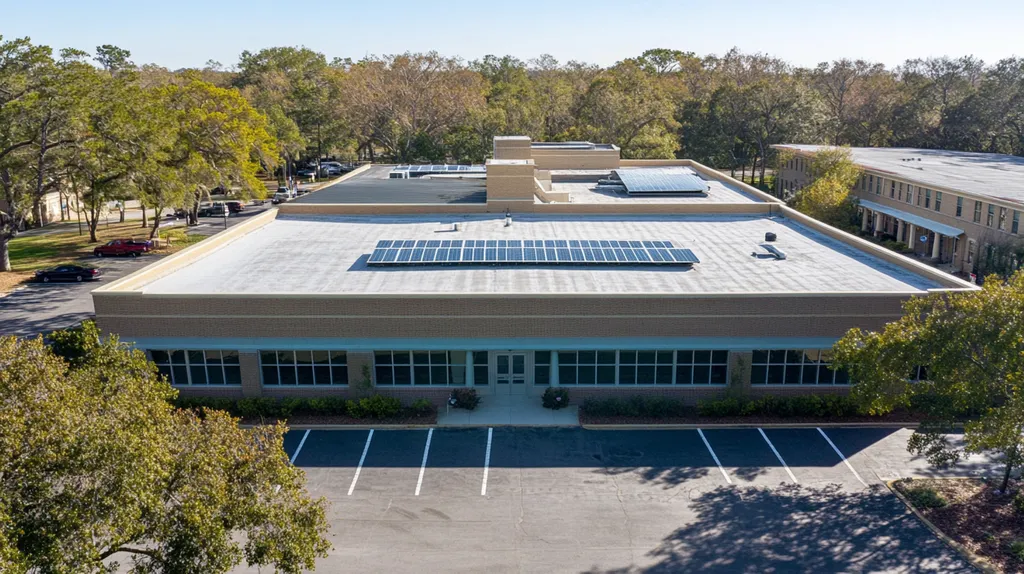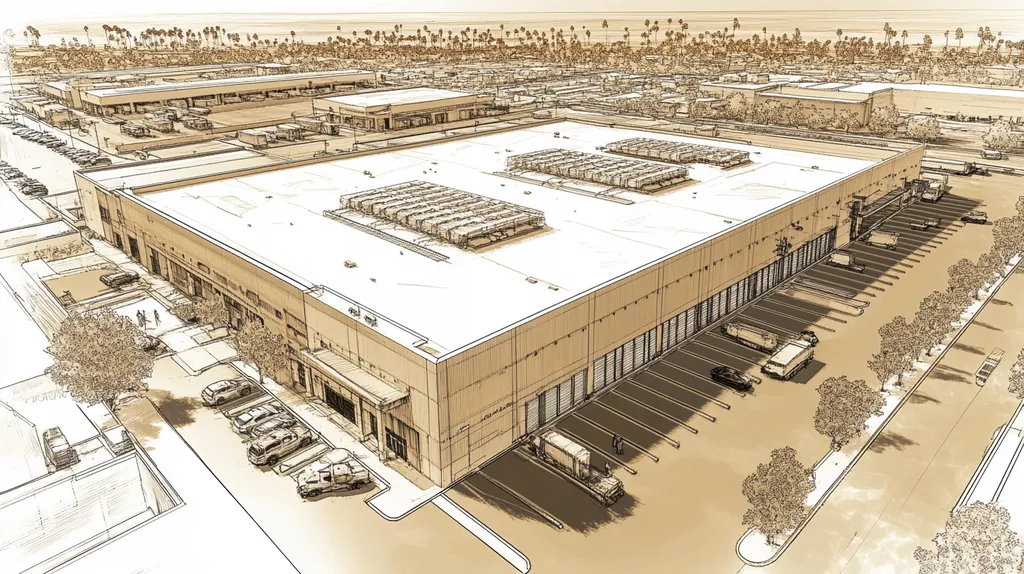Welcome to today’s Battle Royale featuring two roofing heavyweights: “TPO” in the east corner versus “PVC” in the west!
Tonight’s showdown pits these contenders against each other across six punishing rounds designed to test every aspect of their performance for the factors affecting the lifespan of a commercial roof.
At stake? Millions in potential costs, decades of building protection, and the critical performance demands of modern commercial and industrial facilities.
Our professional judging panel will evaluate each round on technical merit, real-world performance, and value delivery. After all six rounds, we’ll declare our ultimate champion.
Ladies and gentlemen, facility managers and building owners… it’s time to rumble!
ROUND 1: INITIAL COSTS & INSTALLATION
In commercial roofing, the initial investment decision can impact a building’s operational costs for decades. When comparing TPO and PVC roofing systems, property owners face a critical choice that affects not just immediate expenses, but long-term performance and maintenance requirements. With roofing membranes expected to deliver 20 to 30 years of service, making an informed decision requires careful evaluation of material costs, installation requirements, and project timelines.
Material Expenses
Material costs represent a significant portion of any commercial roofing project’s budget. TPO membranes typically cost 30% less than their PVC counterparts, making them an attractive option for cost-conscious property owners.
PVC materials command premium prices due to their advanced chemical formulation and enhanced durability. While the higher cost can be justified by superior performance, it often presents a barrier for projects with tight budgets.
Both TPO and PVC roofing membranes will deliver 20 to 30 years of useful life before requiring replacement, making the initial cost difference a key consideration in the selection process. (source: Moser Roofing Solutions)
Given the substantial cost difference with similar lifespan expectations, TPO demonstrates a clear ADVANTAGE in material expenses.
Installation Complexity
Installation procedures directly impact labor costs and project duration. TPO installations require fewer specialized tools and techniques, allowing for more straightforward application processes.
PVC installation demands more precise welding temperatures and specialized equipment. These requirements often limit the pool of qualified installers and can increase labor costs by 20-25%.
The simpler installation requirements of TPO systems reduce the risk of installation errors and minimize the need for specialized training.
With lower complexity and broader installer availability, TPO gains the ADVANTAGE in installation considerations.
Project Timeline
Project duration affects both direct costs and business disruption. TPO installations typically complete 25% faster than comparable PVC projects due to simpler welding requirements and fewer installation steps.
PVC installations require more precise environmental conditions and longer setup times for proper membrane welding. These factors can extend project timelines, particularly in challenging weather conditions.
Faster completion times with TPO systems minimize business disruption and reduce labor costs, making them particularly attractive for retail and industrial facilities.
The significantly shorter installation period gives TPO the ADVANTAGE in project timeline considerations.
ROUND 1 WINNER: TPO
ROUND 2: DURABILITY & LIFESPAN
When a commercial roof fails prematurely, the consequences ripple throughout an organization. Beyond immediate repair costs, businesses face inventory damage, operational disruptions, and potential liability issues. Understanding how different roofing materials perform under stress is crucial for protecting both assets and bottom lines.
Weather Resistance
Commercial roofs must withstand everything from scorching heat to freezing temperatures, often in the same day. TPO membranes offer good flexibility in moderate climates but can show signs of stress in extreme conditions, particularly in areas with dramatic temperature swings.
PVC membranes excel in harsh environments, maintaining their integrity through severe temperature changes, intense UV exposure, and chemical exposure. Their molecular structure provides superior resistance to environmental degradation and weathering.
While both materials provide adequate protection, PVC’s enhanced durability in extreme conditions and superior chemical resistance make it the clear choice for long-term weather protection. The ADVANTAGE goes to PVC.
Maintenance Requirements
Regular maintenance significantly impacts a roof’s longevity and performance. TPO systems require more frequent inspections and maintenance, particularly around seams and penetrations where stress points can develop over time.
PVC roofing demands less ongoing maintenance due to its superior weld strength and chemical resistance. Its robust composition helps prevent common issues like membrane separation and surface degradation, reducing the frequency of repairs.
The reduced maintenance burden and longer intervals between necessary services give PVC the ADVANTAGE in this category.
Material Composition
TPO’s blend of rubber and plastic compounds provides good initial performance but can become vulnerable to degradation over time. The material’s molecular structure may break down under prolonged exposure to heat and chemicals, potentially shortening its service life.
PVC’s vinyl-based composition creates an inherently stronger and more stable membrane. Its chemical makeup resists degradation from industrial emissions, grease exposure, and other common rooftop contaminants that can compromise other materials.
With superior chemical stability and proven long-term performance, PVC demonstrates clear superiority in material composition, earning another ADVANTAGE.
ROUND 2 WINNER: PVC
ROUND 3: PERFORMANCE FACTORS
Performance factors can make or break a commercial roofing investment, directly impacting both immediate functionality and long-term value. Modern roofing systems must withstand increasingly extreme weather events while maintaining their protective qualities. The wrong choice can lead to premature degradation, increased energy costs, and potentially catastrophic failures.
Weather Resistance
Weather resistance determines how well a roofing system protects against environmental stressors. TPO membranes provide good initial weather resistance and excellent reflectivity, helping buildings maintain comfortable interior temperatures.
However, TPO can show vulnerability in regions with extreme temperature fluctuations, potentially leading to membrane stress and deterioration over time. The material’s performance can be particularly challenged in areas with frequent freeze-thaw cycles.
PVC roofing demonstrates superior resistance to environmental challenges, maintaining its structural integrity through severe weather events. Its molecular composition allows it to handle temperature extremes without compromising performance.
With better long-term durability and consistent performance across diverse climate conditions, PVC claims the ADVANTAGE in weather resistance.
UV Stability
UV stability directly impacts a roof’s longevity and energy efficiency. TPO membranes incorporate UV inhibitors that provide good initial protection, but their effectiveness can diminish over time.
Extended sun exposure may eventually lead to surface degradation in TPO systems, potentially requiring more frequent maintenance or earlier replacement. This vulnerability becomes particularly evident in high-UV environments.
PVC roofing maintains exceptional UV stability throughout its service life. Its chemical composition inherently resists UV degradation, helping preserve both appearance and functionality.
Given its superior long-term UV resistance and minimal degradation, PVC earns the ADVANTAGE in UV stability.
Puncture Resistance
Higher-quality materials offer better durability and longer lifespans, with puncture resistance being a critical factor in commercial applications. TPO provides adequate protection against typical impacts but may show vulnerability to sharp objects and heavy foot traffic. (source: Cloud Roofing)
Over time, TPO’s resistance to punctures can decrease, particularly in high-traffic areas or locations with frequent maintenance requirements. This degradation may necessitate more careful monitoring and protection measures.
PVC roofing delivers consistently superior puncture resistance throughout its service life. Its robust composition helps prevent damage from typical rooftop hazards, including fallen branches, maintenance equipment, and hail.
With better long-term puncture resistance and durability, PVC secures the ADVANTAGE in this category.
ROUND 3 WINNER: PVC
ROUND 4: MAINTENANCE REQUIREMENTS
In commercial roofing, maintenance oversights can transform minor issues into catastrophic failures. Studies show that properly maintained roofs can last up to 50% longer than those receiving minimal care. For facility managers, understanding the maintenance demands of different roofing systems is crucial for protecting their investment and avoiding costly emergency repairs.
Maintenance Frequency and Scope
TPO roofing systems typically require inspections every six months, with particular attention needed around seams and penetrations. These inspections must check for membrane separation, punctures, and signs of UV degradation.
Regular cleaning is essential for TPO roofs, as dirt and debris accumulation can accelerate wear and reduce reflective properties. The membrane may also require periodic resealing of seams as they age.
PVC roofing demands less frequent maintenance, often needing only annual inspections due to its superior chemical stability and weld strength. Its inherent resistance to biological growth and chemical exposure reduces cleaning requirements.
With lower maintenance frequency and simpler inspection protocols, PVC claims the ADVANTAGE in this category.
Repair Complexity
When repairs become necessary, TPO systems often present challenges in matching aged material with new patches. The welding process for repairs must be precise to prevent future separation, requiring skilled technicians.
Environmental conditions can also impact TPO repair success rates, as temperature and humidity affect weld quality. This sensitivity can extend repair timelines and increase costs.
PVC repairs tend to be more straightforward and reliable due to the material’s consistent weldability throughout its lifespan. The strong chemical bonds created during repairs maintain their integrity even under harsh conditions.
Given its superior repair characteristics and long-term reliability, PVC earns the ADVANTAGE.
Long-term Maintenance Costs
The lifespan of commercial roofing systems varies significantly based on maintenance quality and material durability. TPO roofs may require more frequent maintenance interventions as they age, particularly in challenging environments. (source: Central Exteriors)
These increased maintenance requirements for TPO translate to higher labor costs and more frequent material expenses over time. The cumulative effect can significantly impact facility operating budgets.
PVC roofing systems typically incur lower long-term maintenance costs due to their durability and resistance to common deterioration factors. Their superior chemical stability reduces the need for specialized cleaning products or treatments.
With demonstrably lower lifetime maintenance expenses, PVC secures the ADVANTAGE in this category.
ROUND 4 WINNER: PVC
ROUND 5: SUSTAINABILITY CREDENTIALS
Environmental responsibility has become a defining factor in commercial roofing decisions, with sustainability requirements now directly impacting property values and operating costs. Modern building codes and green certifications increasingly demand roofing systems that minimize environmental impact while maximizing energy efficiency. The stakes are particularly high for facilities pursuing LEED certification or energy-focused tax incentives.
Recyclability and End-of-Life Options
Responsible disposal and recycling of roofing materials has become a critical environmental consideration. TPO membranes are fully recyclable, with established programs allowing used materials to be processed into new roofing products or other applications.
The recycling infrastructure for TPO is well-developed, with manufacturers operating dedicated recycling facilities across North America. This network makes it practical and cost-effective for contractors to divert TPO materials from landfills.
PVC roofing presents significant recycling challenges due to its chemical composition. While technically recyclable, few facilities can process used PVC roofing materials effectively, resulting in most being sent to landfills.
With superior recyclability and established recycling programs, TPO claims the ADVANTAGE in end-of-life considerations.
Energy Efficiency and Heat Management
TPO membranes excel in reflecting solar radiation, with new installations typically achieving solar reflectance values above 0.85. This high reflectivity can reduce cooling costs by up to 30% in warm climates.
These reflective properties of TPO remain relatively stable over time, requiring only basic cleaning to maintain performance. The material’s molecular structure resists degradation that could compromise its thermal properties.
PVC roofing offers moderate reflectivity but generally cannot match TPO’s performance in heat management. While still energy-efficient, PVC systems typically show lower initial reflectance values and may experience more significant degradation over time.
Given its superior solar reflectance and thermal performance, TPO earns the ADVANTAGE in energy efficiency.
Environmental Impact During Production
Manufacturing TPO membranes requires less energy and produces fewer emissions compared to PVC production. The simpler chemical composition of TPO allows for more efficient manufacturing processes with reduced environmental impact.
TPO production generates minimal harmful byproducts and doesn’t require the use of chlorine-based compounds. This results in a smaller carbon footprint during the manufacturing phase.
PVC manufacturing involves more complex chemical processes and generates potentially harmful byproducts. The production requires chlorine and other chemicals that can impact environmental quality.
With cleaner production processes and lower environmental impact, TPO secures the ADVANTAGE in manufacturing considerations.
ROUND 5 WINNER: TPO
ROUND 6: SPECIALIZED APPLICATIONS
The unique demands of specialized commercial roofing applications can make or break a building’s long-term performance. From food processing facilities requiring strict hygiene standards to data centers demanding perfect climate control, choosing the wrong roofing system for specialized needs can lead to premature failure and significant operational disruptions. Modern commercial roofs must adapt to increasingly complex building uses while maintaining their protective qualities.
Chemical Resistance
In industrial environments, roofing materials face constant exposure to harsh chemicals, oils, and industrial emissions. TPO membranes offer good initial chemical resistance but can show vulnerability to prolonged exposure to industrial solvents and petroleum-based products.
Over time, TPO’s chemical resistance may deteriorate, particularly in areas with high concentrations of industrial emissions or grease exposure. This vulnerability often requires additional protective measures and more frequent inspections.
PVC roofing demonstrates exceptional resistance to chemicals, acids, and oils throughout its service life. Its molecular structure remains stable even under sustained exposure to harsh industrial conditions, making it ideal for manufacturing facilities and restaurants.
With superior long-term chemical stability and resistance, PVC claims the ADVANTAGE in this category.
High-Traffic Durability
Commercial roofs often serve as platforms for mechanical equipment maintenance, requiring materials that can withstand regular foot traffic. TPO systems show adequate initial resistance to traffic but may develop wear patterns and potential weak points over time.
The surface of TPO membranes can become compromised under sustained traffic, especially around HVAC units and other frequently accessed equipment. This vulnerability may necessitate additional walkway padding and protective measures.
PVC roofing maintains its structural integrity even under heavy foot traffic and equipment maintenance activities. Its superior puncture resistance and durability make it particularly well-suited for roofs requiring frequent access.
Given its better long-term performance under traffic stress, PVC earns the ADVANTAGE.
Temperature Extremes
Modern commercial roofs must handle increasingly extreme temperature fluctuations while maintaining their protective qualities. TPO membranes perform well in moderate climates but can show stress in environments with dramatic temperature swings.
Under extreme heat or cold, TPO may experience more rapid aging and potential membrane shrinkage. This characteristic requires careful consideration in regions with volatile weather patterns.
PVC roofing maintains consistent performance across a broader temperature range, showing minimal degradation even in extreme conditions. Its superior dimensional stability helps prevent membrane shrinkage and deterioration in challenging climates.
With better performance across temperature extremes, PVC secures the ADVANTAGE.
ROUND 6 WINNER: PVC
AND THE WINNER IS…
After six grueling rounds of technical analysis, with four rounds to two, our champion by technical knockout is… PVC ROOFING!
PVC dominated the durability battle, crushing the competition in weather resistance, chemical stability, and long-term performance. Its superior showing in maintenance requirements and specialized applications proved decisive, demonstrating championship-caliber resilience when the pressure was highest.
But don’t count TPO out! This scrappy contender showed impressive power in both sustainability and cost-effectiveness. For buildings in moderate climates with tight budgets, TPO remains a formidable challenger worthy of consideration.
However, folks, remember that every building faces its own unique battle conditions. Local climate, facility usage, and specific property requirements can dramatically impact roofing performance. While PVC claims today’s title belt, your facility’s particular needs might favor a different champion.
Before making your final decision, consult with qualified roofing professionals who can evaluate your specific situation. They’ll help ensure your choice delivers the knockout performance your building demands.
In the high-stakes arena of commercial roofing, victory doesn’t just come from picking the reigning champ – it comes from matching your building’s unique challenges with the right contender’s strengths. Choose wisely, building owners. Your facility’s future depends on it!
FREQUENTLY ASKED QUESTIONS
Q. How do initial costs affect a commercial roof choice?
A. Initial costs significantly influence choices for commercial roofs. TPO membranes are generally less expensive to install compared to PVC options. This cost difference can impact long-term budget planning, maintenance costs, and overall investment strategies over decades.
Q. What are the durability differences in industrial roofs?
A. The durability of industrial roofs varies between materials. PVC outperforms TPO in extreme weather and chemical resistance, ensuring longer usability and reduced risk of premature failure. Understanding these differences helps property managers make informed decisions.
Q. How does maintenance affect a commercial roof’s lifespan?
A. Regular maintenance directly impacts a commercial roof’s lifespan. TPO systems usually require more frequent inspections and cleaning compared to PVC. By effectively managing maintenance routines, facility managers can extend roof life significantly and avoid costly repairs.
Q. Which roofing option is better for sustainability?
A. Sustainability is essential in roofing choices. TPO membranes offer superior recyclability, whereas PVC faces recycling challenges leading to landfill waste. Sustainable materials often help properties achieve environmental certifications, affecting overall value positively.
Q. How do specialized applications affect commercial roof choices?
A. Specialized applications demand specific roof characteristics. For example, environments with harsh chemicals require PVC for its exceptional durability, while moderate climates may function well with TPO. Choosing the right material ensures optimal performance for unique operational needs.
Q. What role does energy efficiency play in roof selection?
A. Energy efficiency significantly influences roofing decisions. TPO’s high solar reflectance helps reduce cooling costs in warmer regions. Conversely, PVC offers moderate energy efficiency but cannot compete with TPO’s thermal performance, making it less favorable in energy-conscious projects.
Q. What is the impact of weather on commercial roof performance?
A. Weather conditions greatly affect roof performance. TPO can struggle in extreme temperatures, while PVC maintains integrity under harsh weather. Evaluating roof materials in relation to local climate will help ensure longevity and minimize maintenance needs.










